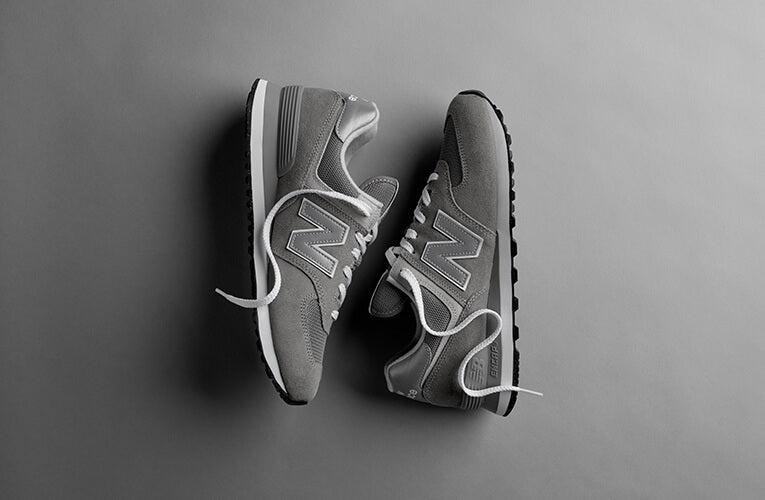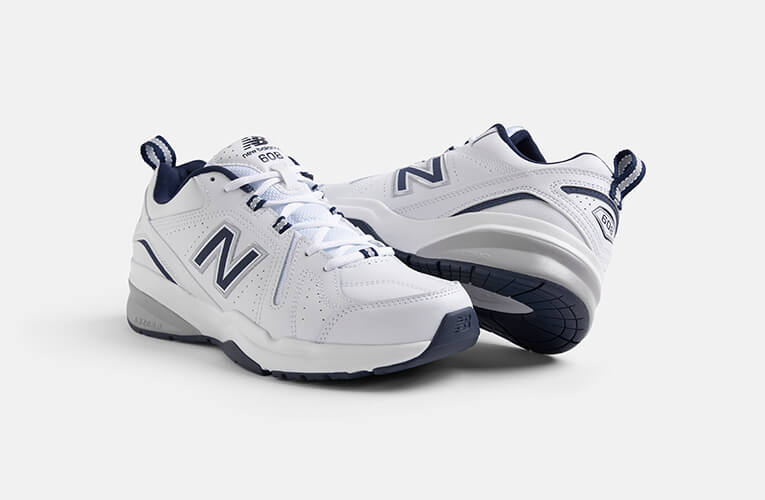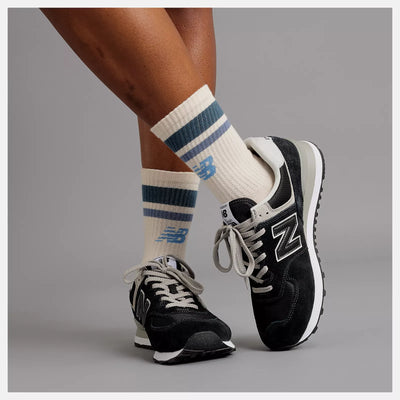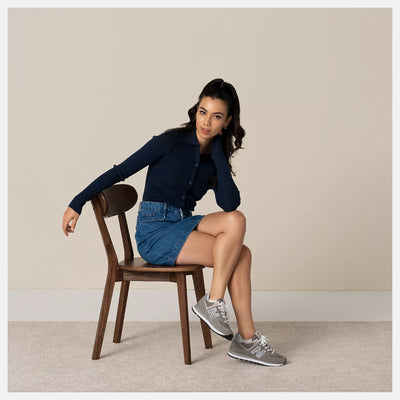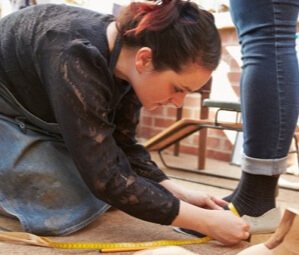Shoes for Gout
Gout, also called gouty arthritis, causes severe pain and swelling in the joints. Although gout is a type of arthritis, it only flares up when high levels of uric acid circulate in the blood and form urate crystals that settle in the tissues of the joints. Gout is most common in men and often found in the big toe, but may also affect the heel, ankle, hand, wrist or elbow. Additionally it may contribute to spine issues and back pain. Onset is sudden and it usually goes away after 5-10 days, but may recur unless treated. Over time, gout can harm your joints, tendons and other tissues
How Common Is Gout?
A recent study found that 1 in 40 people suffer from gout, giving the UK the dubious honour of being “the gout capital of Europe,” according to the Daily Mirror. Research has shown that gout is on the rise worldwide and is the most common form of inflammatory arthritis among men.
Causes
While having too much uric acid in the blood may not be in and of itself harmful -- many people with high levels never get gout – problems arise when uric acid forms sharp, needle-like crystals in your joints, causing inflammation, swelling and intense pain. Your body produces uric acid when it breaks down purines, substances found naturally in your body, as well as in certain foods, such as steak, organ meats and seafood. Other foods promoting higher levels of uric acid include alcoholic beverages (especially beer) and drinks sweetened with fruit sugar (fructose).
Although genetics and family history may play a role, gout can seem to flare up without specific cause. It can be brought on by:
Certain conditions related to diet and body weight, such as being overweight, eating a diet rich in meat and seafood (high-purine foods) and drinking too much alcoholMedicines that increase uric acid concentration, such as regular use of aspirin or niacin or using diuretics that reduce the amount of salt and water in the body.Major illness or certain medical conditions, such as rapid weight loss, high blood pressure or chronic conditions such as diabetes, metabolic syndrome, and heart and kidney diseases.SurgeryCongenital conditions such as Kelley-Seegmiller syndrome or Lesch-Nyhan syndrome that have enzyme deficiencies causing high blood uric acid levels
Gout occurs more often in men, as women tend to have lower uric acid levels. After menopause, however, women's uric acid levels rise dramatically. Men also are more likely to develop gout earlier -- ages 30-50 — whereas women generally exhibit symptoms after menopause.
How to Manage Gout
The signs and symptoms of gout almost always develop suddenly — often at night — and without warning. They include:
- Intense joint pain. Gout usually affects the large joint of your big toe, but it can flare up in feet, ankles, knees, hands and wrists. The pain is likely to be most severe within the first 4-12 hours.Lingering discomfort. After the most severe pain subsides, some joint discomfort may last from a few days to a couple of weeks. Later attacks are likely to be of longer duration and affect more joints.Inflammation and redness. The affected joint(s) become swollen, tender, warm and red.Limited range of motion. Decreased joint mobility may occur as gout progresses.
See your doctor even if pain from gout is gone. The buildup of uric acid that led to the attack can still harm your joints.
Advanced gout - Urate crystals may form under the skin and create nodules (tophi) which can develop in fingers, hands, feet, elbows or Achilles tendons. While tophi are painless, they do become swollen and tender during gout attacks.
Kidney stones - Urate crystals may collect in the urinary tract, causing kidney stones. This risk can also be reduced with medications.
Your doctor will do a physical exam and ask questions about your symptoms. Tests to help diagnose gout may include:
Joint fluid test - fluid from your affected joint is drawn via needle to determine the level/existence of urate crystals.Blood test to measure the levels of uric acid and creatinine in your blood. However, results may be inconclusive as some people with high uric acid levels never experience gout. Still others with seemingly normal levels of uric acid in the blood may exhibit symptoms.X-rays of joints to rule out other causes of inflammation.Ultrasound to detect urate crystals or tophi in a joint.Dual energy CT scan to presence of urate crystals, even when the joint is not acutely inflamed.
To stop a gout attack, your doctor can give you corticosteroids and/or anti-inflammatory medicines. Relief from a gout attack often begins within 24 hours as long as you seek immediate treatment.
Medicines to treat recurring and prevent future attacks may include:
Nonsteroidal anti-inflammatory drugs (NSAIDs) including over-the-counter options such as ibuprofen and naproxen sodium, as well as more-powerful prescription NSAIDs such as indomethacin or celecoxib.
Colchicine, which stops the swelling and other symptoms of gout. Common side effects may include nausea, vomiting and diarrhoea.
Corticosteroid medications, such as the drug prednisone, may control inflammation and pain. Corticosteroids may be administered as pills or may be injected into your joint.
If you experience several gout attacks each year or if your attacks are less frequent but particularly painful, your doctor may recommend additional medications. These may include xanthine and oxidase inhibitors (including allopurinol) and febuxostat that block uric acid production and/or probenecid which improves uric acid removal by helping kidneys function more effectively.
While medications are the most proven and effective way to treat gout, certain lifestyle changes may also help, including:
- Limiting alcoholic beverages (especially beer) and drinks sweetened with fruit sugar (fructose). Drink plenty of nonalcoholic beverages, especially water.Limit intake of foods high in purines, such as red meat, organ meats and seafood.Exercising regularly and losing and maintaining a healthy weight. Avoid fasting or rapid weight loss, since doing so may temporarily raise uric acid levels.Get your protein from low fat dairy products, which may actually help protect against gout.
Other foods have been shown to lower uric acid levels, including:
- Both regular and decaffeinated coffeeVegetables and fruits (especially oranges) containing vitamin CCherries and cherry extracts
Relaxation techniques, such as deep breathing exercises and meditation, may also help take your mind off your pain.
How to Find Shoes for Gout
A recent study at the University of Auckland in New Zealand found that almost half of the patients with gout commonly wear the wrong type of shoes, leading to increased pain, impairment and disability. However, the other 56 percent of the participants made good footwear choices!
If you have gout, consider the following when purchasing shoes:
-
Footwear should be wide enough
and deep enough to accommodate any swelling that might occur.
-
Purchase shoes with arch and metatarsal support
Both of which help reduce the strain on the ball of the foot. An adjustable sandal works well because the support is already built into the footbed of the shoe and straps can be moved as feet swell.
-
Because they are rigid and keep the ball of the foot and toes in place
Shoes with forefoot rockers can greatly reduce pain. Check to see if the front of your shoe bends easily; if not, move onto the next pair.
-
Allow plenty of space for the foot and toes.
This will circumvent the crimping, pinching and pressure that can impede blood circulation around the foot and ankles.
-
Shoes should allow maximum air circulation
Make sure there's circulation around the feet to avoid buildup of heat that may result in inflammation.
-
Shoes should be comfortable and have good cushioning with well padded insoles.
Giving your feet as soft a ride as possible will help protect them against bumping and jarring that may also trigger gout.
Good choices include sneakers (trainers), walking shoes, Oxfords and thick-soled sandals. Avoid thin, strappy sandals that allow no room for adjustment; flip-flops; slippers; moccasins; and tight-fitting or narrow-toed shoes. High heels may be risky as well, as they put pressure on the knee and ankle, which may also trigger gout.
While you may have to spend more time and money on well-chosen shoes, they will last longer and ensure comfort. And ask your healthcare specialist about the best footwear when dealing with gout.
Sources
- www.webmd.com/arthritis/tc/gout-topic-overview
- www.mayoclinic.org/diseases-conditions/gout/basics/definition/con-20019400
- www.nhs.uk/news/2014/01January/Pages/UK-gout-rates-rise-30.aspx
- www.best-gout-remedies.com/shoes-for-gout.html
- www.webmd.com/arthritis/news/20111003/wrong-shoes-make-gout-pain-worse
- www.shoesnfeet.com/blog/gout#sthash.dD6db37Q.dpuf


